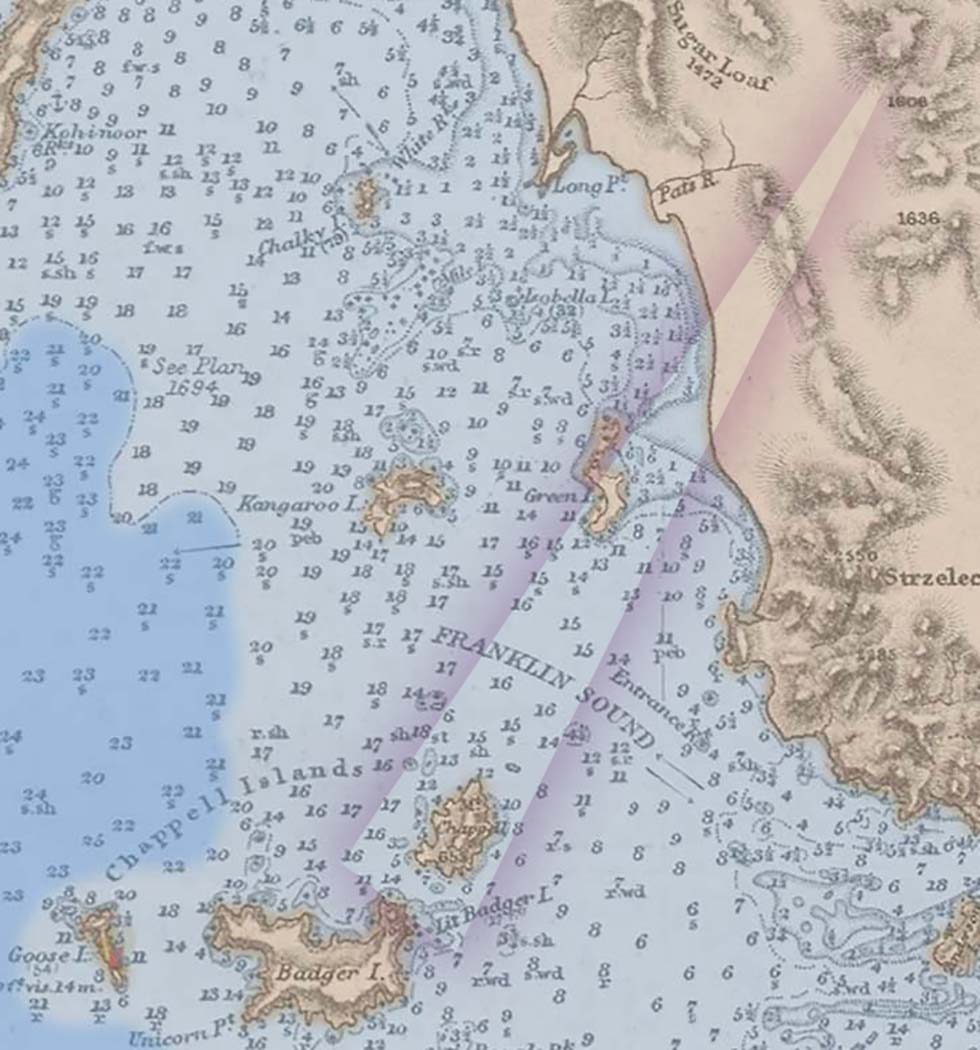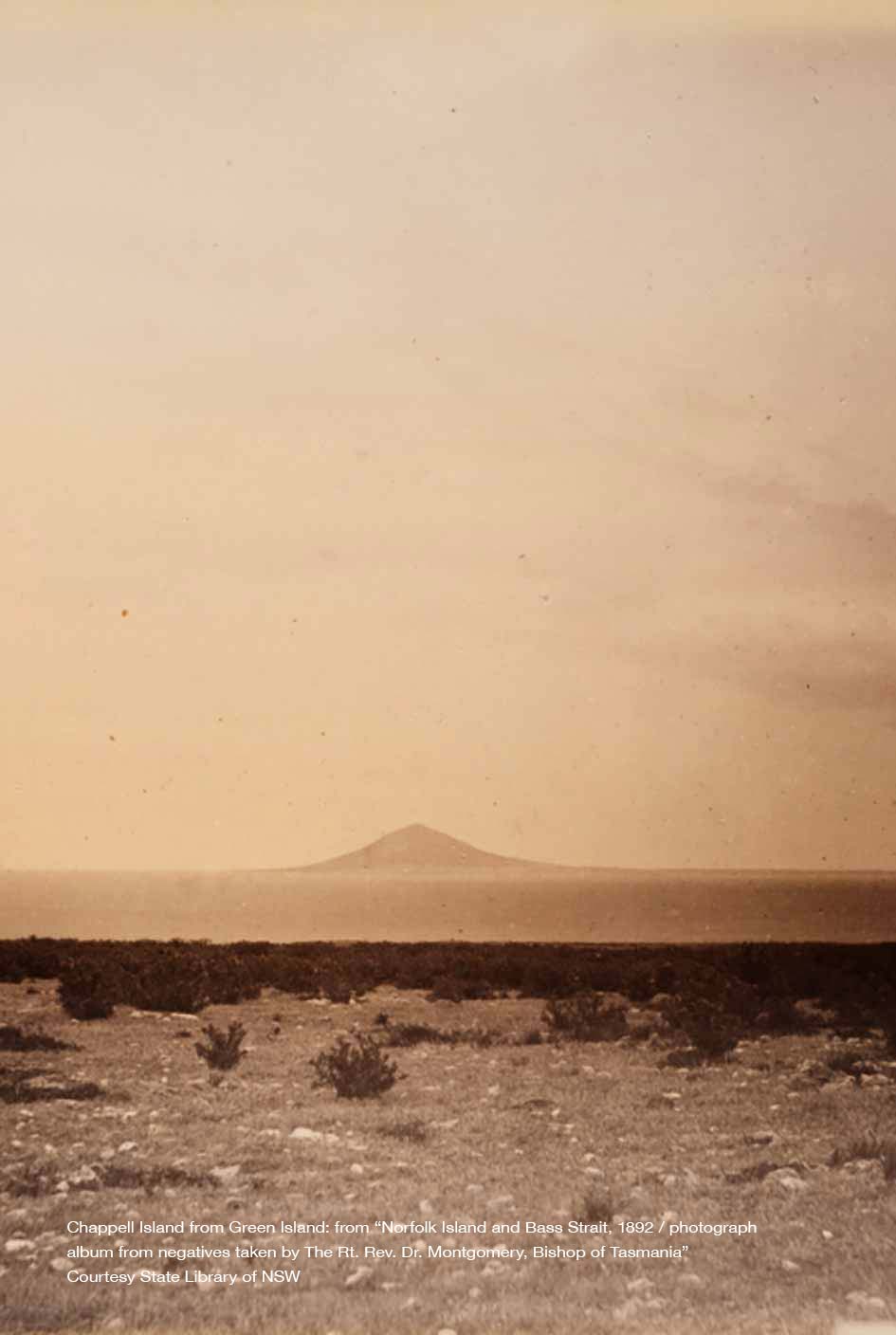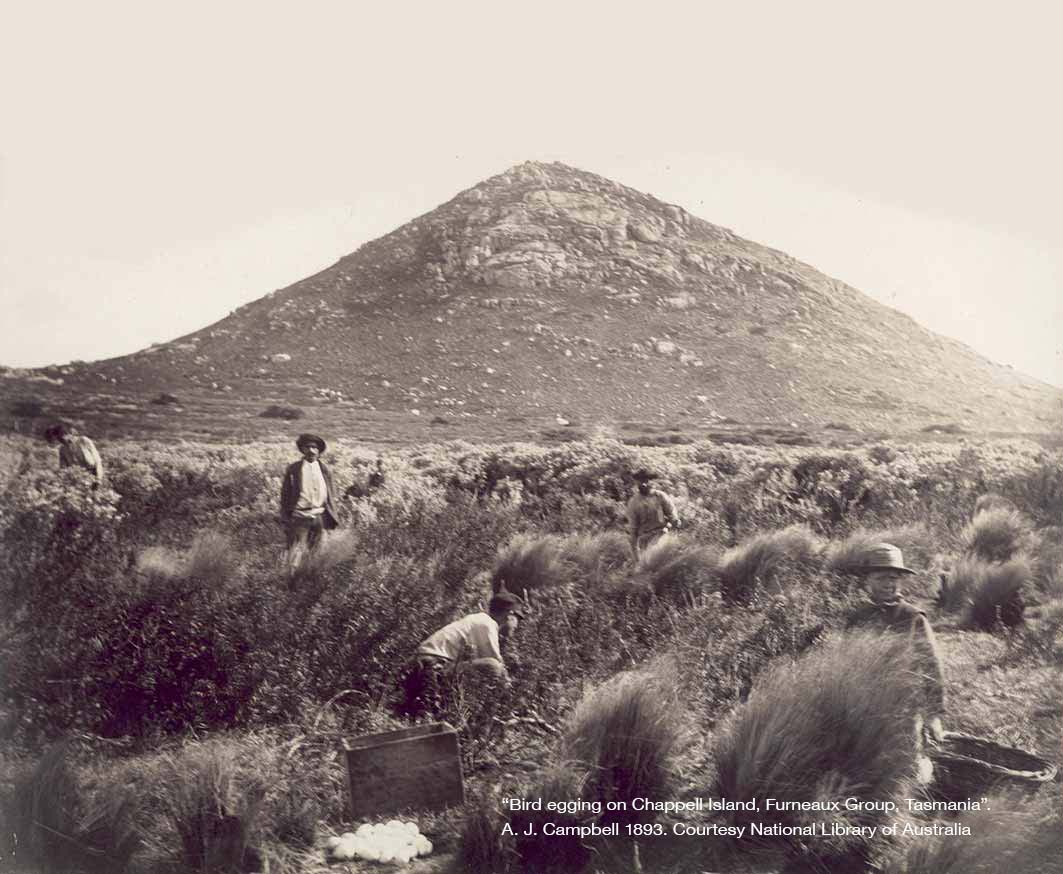
a heritage island
A striking feature of Mount Chappell Island is the hill on it that seems to rise straight from the surrounding waters. Its prominence is such that it was one of the first features to be named by Matthew Flinders on his initial visit to the Furneaux Group in February 1798.
In his journal he noted that:
"Upon one of a small cluster of low islands, subordinate to Furneaux’s Islands, is a mountain, conspicuous for being the only considerable eminence upon them, and remarkable for its uniform roundness. It received the name of Mount Chappelle, in February 1798, and the name is since extended to the isles which lie in its immediate neighbourhood. The passage amongst these isles, through which the track is marked in the the chart, is safe for any ship with a leading wind; being two miles in width, and having more than ten fathoms in it."
It is rather quaint the way Flinders refers to the island "receiving its name" as if he had nothing to do with it. He in fact chose to name one of the first features recorded by him on the Australian coastline after his future wife - Ann Chappell.

The island played a prominent role in the muttonbirding operations that were such a central part of the Furneaux Group's economy over the 1800s and early 1900s.
